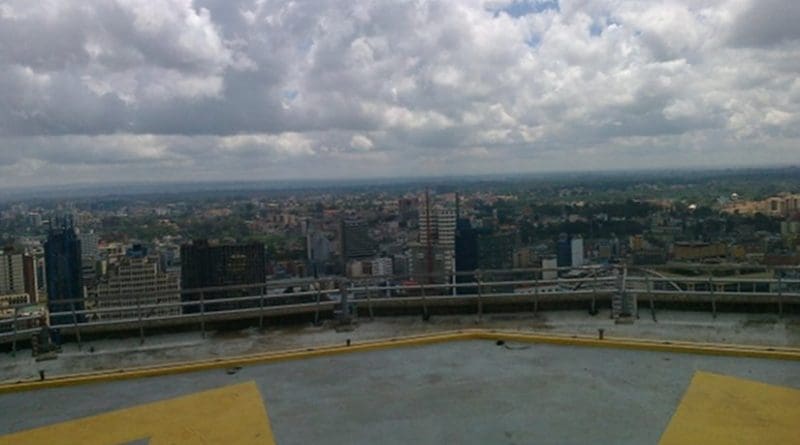Kenya: No Letup In Killings By Nairobi Police, Says HRW
Since December 25, 2019, police in Kenya have shot dead at least eight people in Nairobi’s Mathare, Kasarani, and Majengo settlements, Human Rights Watch said. The police continue to kill crime suspects and protesters in cold blood despite persistent calls to end the killings and the use of excessive force.
The killings are the latest in a longstanding pattern of excessive force and unlawful killings in Nairobi’s low-income neighborhoods. Kenyan authorities should urgently investigate all alleged killings, many of which have been documented by Kenyan and international organizations, and ensure that all those responsible are held to account.
“Kenyan police are shooting young people dead in total disregard of the rules for the use of force,” said Otsieno Namwaya, senior Africa researcher at Human Rights Watch. “Kenyan authorities should end these unlawful and unjustified killings of unarmed people and bring officers involved in the killings to justice.”
In January 2020, Human Rights Watch interviewed 23 people including witnesses, family members of victims, hospital mortuary staff, medical and social workers, activists, and police personnel. Human Rights Watch worked closely with partner organizations in Mathare, Majengo, and Kasarani to identify victims and families.
In 3 low-income neighborhoods, police killed at least 8 young men 3 weeks after Christmas, Human Rights Watch found. In Mathare, on December 25 at about 5:30 p.m., police shot dead Peter Irungu, 19, and Brian Mung’aru, 20. Both men were kneeling and pleading with police to spare their lives when they were shot, witnesses said.
On December 26, anti-riot police violently suppressed a protest over the young men’s killings, using live ammunition, tear gas, and beatings. The police beat protesters, injuring more than 10, and arrested many. Police blocked media outlets from accessing Mathare to cover the demonstrations, according to witnesses there.
During a protest on January 15 in the Kasarani settlement over poor road conditions, police fired live bullets at protesters and residents. In the process, they shot dead a 19-year-old transport worker, Stephen Machurusi. Witnesses saw him kneeling to plead with riot police, who had barricaded sections of the road, to allow him to pass through to go to work. A 30-year-old rights activist in Kasarani who witnessed the killing said
“On the way to work, he encountered youth running from police. He didn’t know there was a demonstration. He surrendered to police, raising his hands and said he was on his way to work but one officer just shot him at close range in the chest.”
In Majengo, on January 16, 2 police officers on patrol killed 24-year-old Ahmed Majid. Witnesses said the officers shot him when he tried to intervene as they dragged his friend, Yassin Athuman, 20, along the ground toward the police station. The officers had attempted to plant marijuana on Yassin, which he resisted, after he refused to give them a bribe, the witnesses said.
On January 17, the police killed another four people during street demonstrations by Majengo residents protesting Majid’s killing. A Majengo rights activist who documented the violence said “Police used a lot of force to suppress the demonstrations. They were using live bullets, in most cases just shooting inside people’s houses or aiming at people who were not part of the demonstrations.” Police told the media on January 18 that they have arrested the officer suspected of killing Majid.
The recent killings are the latest in a longstanding pattern of killings and excessive force in these neighborhoods. In July 2019, Human Rights Watch documented 21 cases of police killings of men and boys in Nairobi’s low-income areas of Mathare and Dandora, apparently with no justification, claiming they were criminals. On January 24, 2020, the Independent Policing Oversight Authority (IPOA) said it had recorded an increase in the number of abuses by police, including killings, to 3,200 in 2019 alone. On January 23, 2019, Interior Cabinet Secretary Fred Matiang’i said government would stop reckless shootings and killing of suspects, which he attributed to rogue officers.
Kenyan media have frequently reported killings in low-income neighborhoods. In May 2018, the Standard newspaper reported that police in Nairobi’s Dandora low-income area had killed at least 10 people aged between 18 and 23 in just one week. In October 2018, the Daily Nation reported that police killed at least 101 people in Nairobi and more than 180 people across Kenya in a 9-month period. It was not clear from the media reports whether any of these killings could be considered justified.
Under Kenya’s National Police Service Act of 2011, lethal force is only justified when strictly unavoidable to protect life. Kenyan security forces should also abide by the United Nations Basic Principles on the Use of Force and Firearms by Law Enforcement Officials, which stipulate that law enforcement officials should use nonviolent means and resort to lethal force only when strictly unavoidable to protect life. The basic principles also require governments to ensure that arbitrary or abusive use of force and firearms by law enforcement officials is punished as a criminal offense.
The Police Service Act requires police officers who use lethal fire to report to their immediate superior, explaining the circumstances that necessitated the use of force. Police officers also are required to report for investigation any use of force that leads to death or serious injury to the Independent Policing Oversight Authority (IPOA), a civilian police accountability institution created in 2011 to investigate and prosecute officers implicated in abuses.

